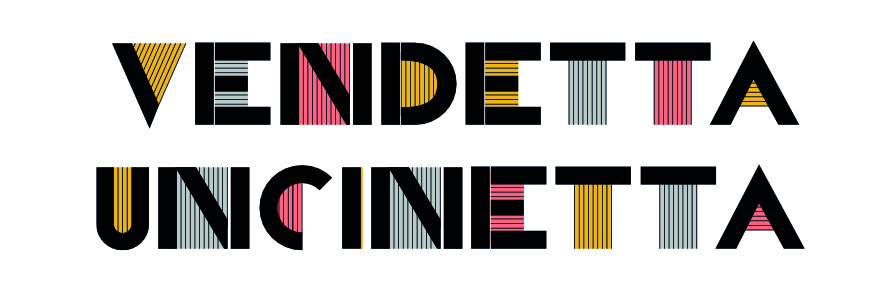Quello che è davvero grande riguardo il recente fenomeno dell’autoproduzione o dell’avere il proprio marchio è possederne il controllo. Per anni i professionisti all’interno del sistema moda non sapevano esattamente dove si sarebbero realizzate le loro idee o se lavoravano nella produzione spesso non sapevano da dove veniva il design di prodotto iniziale. I designers avevano un’idea generica di target, spesso non realistica, piatta e standardizzata, a volte il marchio stesso non conosceva il suo pubblico reale. Tutto riguardava solo il fare la propria parte del lavoro e sentirsi figo solo perché “hey, lavori nella Moda”. Ma il controllo è un punto focale: quando sai, almeno in teoria, vuoi migliorare e risolvere i problemi, non puoi girarti dall’altra parte. Conosci davvero a chi stai vendendo e questo ti permette di limitare prodotti inutili o invenduti. Capisci le problematiche dei tuoi fornitori e li puoi far diventare vantaggi, per esempio. E fondamentalmente cerchi di fare del tuo meglio: di limitare più possibile inquinamento, spreco, di accumulare oggetti senz’anima. Se non si lavora più in termini bidimensionali ed astratti, il processo produttivo, la qualità e aggiungerei anche la soddisfazione di designers e maestranze, non può che aumentare.
Ciò che è stato di cruciale importanza negli ultimi anni è stato proprio il passare dall’astratto al concreto. Da vettoriale a, finalmente, sensoriale.
Questa è la mia intervista alle fondatrici del brand di abbigliamento Iuut: tre ragazze di nazioni diversissime (Italia, Gran Bretagna, Finlandia) che si sono conosciute tramite una call su Youtube, hanno creato un marchio sostenibile (di cui hanno il totale e dettagliato controllo), lanciandolo poi, con successo, su Indiegogo e che ora stanno disegnando assieme ai loro followers di Facebook ed Instagram. La contemporaneità in fatto di brand passa da qui.
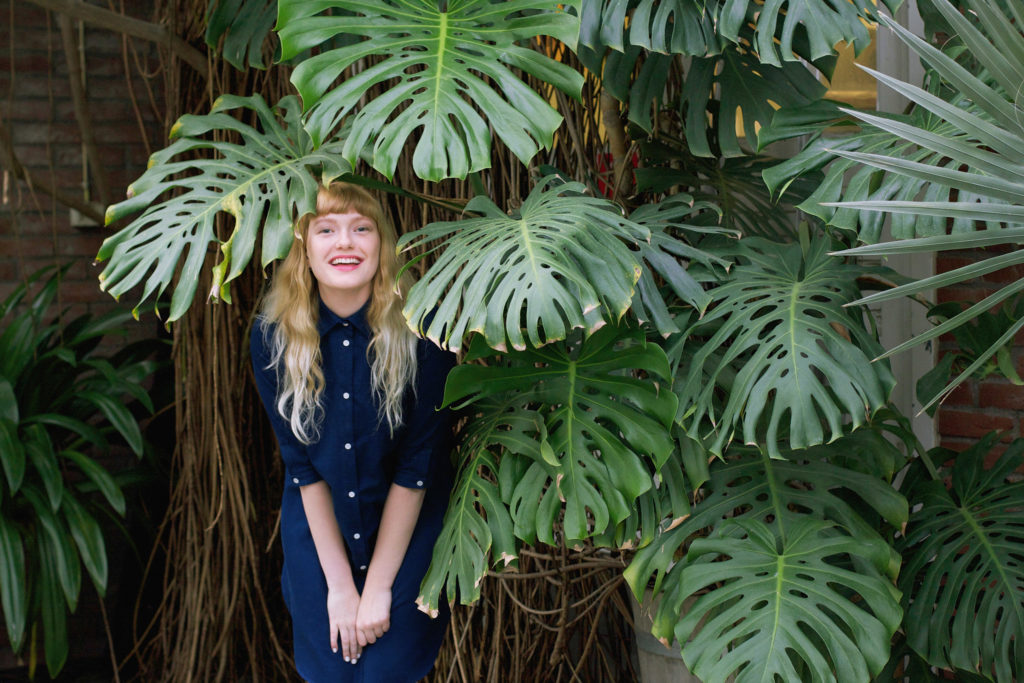
-Perchè ognuno di noi dovrebbe cominciare a comportarsi eticamente riguardo l’abbigliamento?
SILVIA STELLA OSELLA, co-founder & textile designer, Italia
Come per qualsiasi cambiamento, credo sia importante partire dal micro per poter agire sul macro: le piccole scelte che facciamo tutti i giorni hanno un impatto molto più grande di quello che possiamo immaginare; e così come stiamo diventando più consapevoli per quanto riguarda ciò che mangiamo o su come ci spostiamo, è giusto cominciare a farlo anche per altri aspetti della nostra quotidianità. Comportarsi in maniera etica nell’ambito dell’abbigliamento significa ridurre l’impatto di questa industria sull’ambiente, migliorare le condizioni dei lavoratori e diminuire le ripercussioni negative sulla nostra salute; in questo senso basti pensare che la nostra pelle assorbe quasi quanto il nostro stomaco! E’ davvero arrivato il momento di cominciare a chiedersi di cosa e come è fatto ciò che ci mettiamo addosso tutti i giorni.
ELINA CERELL, founder & CEO, Finlandia
E’ triste che l’industria dell’abbigliamento, che crea così tanta bellezza, sia allo stesso tempo la seconda causa di inquinamento mondiale oltre che di ingiustizie sociali.Ognuno di noi ha la possibilità di fare la differenza e di fare in maniera sostenibile i propri acquisti. In questa maniera contribuiremo a creare un mondo migliore e a far si che i diritti dei lavoratori siano rispettati.
VJ TAGANAHAN, co-founder & fashion designer, Gran Bretagna
Semplicemente perchè la maniera in cui ci vestiamo non è solo una dichiarazione di ciò che siamo o di come vorremmo essere percepiti, ma riguarda anche le persone che hanno concretamente creato i nostri vestiti, il processo di produzione e l’impatto ambientale. Oggi viviamo in una società in cui la conoscenza e le informazioni sono alla nostra portata e quindi abbiamo la capacità di cambiare le cose.
-Secondo voi l’abbigliamento è tutt’ora la prima maniera per comunicare chi si è?
S: Siamo ormai abituati ad un consumo frenetico di immagini: ogni giorno siamo bombardati di
contenuti visivi pensati per una fruizione immediata. In questo contesto il valore identitario che
diamo al nostro modo di vestirci ha raggiunto picchi molto alti. Secondo la mia percezione però si
sta lentamente tornando a un approccio più “slow” alle cose; mi sembra che oggigiorno si ricominci
ad essere interessati all’approfondimento, a voler capire meglio cosa si nasconde sotto la
superficie. Mi sembra che non ci sia più la necessità di vestirsi per apparire o per definire uno
statement; ma piuttosto la volontà di cominciare a farsi domande, a voler approfondire e
appassionarsi alle storie che, una volta fatte proprie, si “indossano” con orgoglio.
E: La maniera in cui ci vestiamo certamente ha un ruolo di grande importanza per la nostra espressione, ma credo che ultimamente, e specie per le generazioni più giovani, la maniera più forte di farlo sia tramite i social networks. E’ qualcosa che riguarda più il cosa stai facendo e dove sei stato, Facebook ed Instagram sono sempre più popolari e ne è un segno. Credo che le persone diando sempre più valore all’azione rispetto all’apparenza.
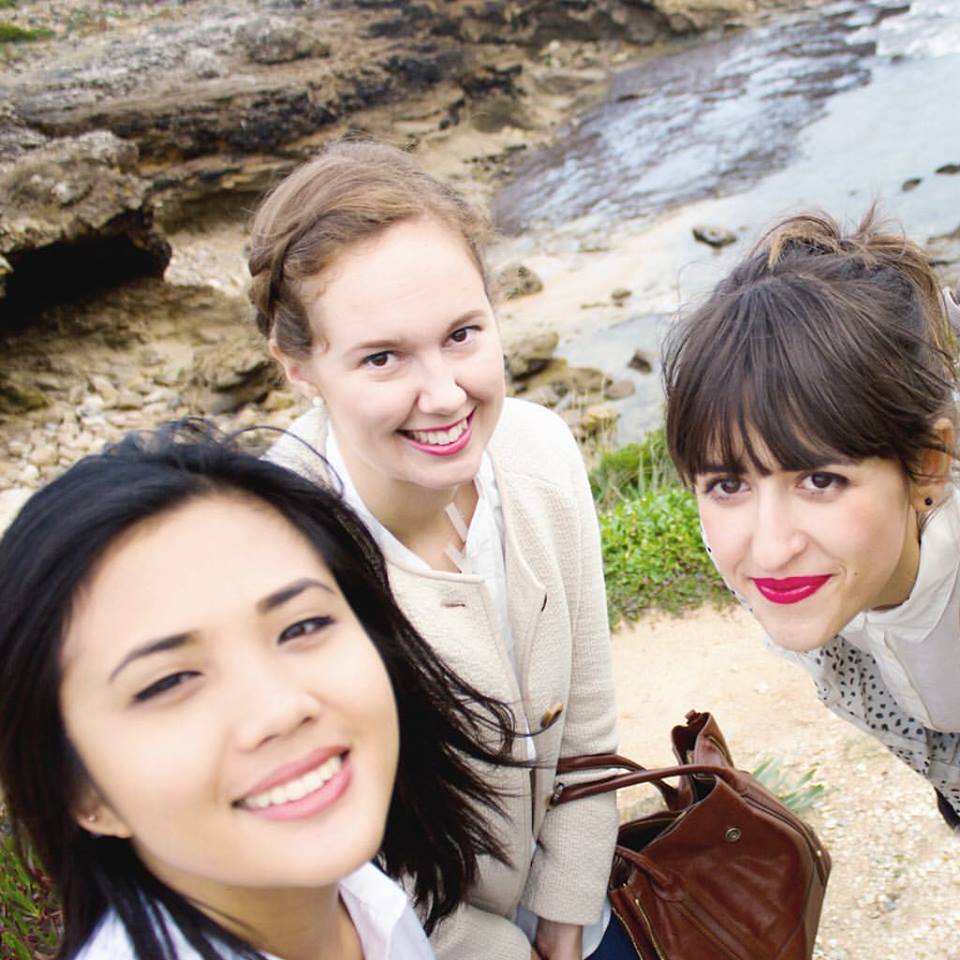
– Ditemi qual’è stato il vostro primo pensiero quando avete deciso di unirvi al progetto Iluut. E poi il secondo, di pensiero (che di solito è più saggio).
E: Ho avuto il sogno di un brand di moda sostenibile per molti anni. Avevo un piano in merito, credevo che
in un primo momento avrei dovuto frequentare il mondo delle grandi imprese per imparare come certi businness sono gestiti. Nella primavera del 2014 ho sentito davvero che era un momento perfetto per capire se fossi riuscita a trovare persone che la pensassero come me. Volevo un
team internazionale e ho pensato che il modo migliore per raggiungere le persone giuste poteva essere Youtube. Devo ammettere che durante la pianificazione avevo paura e mi chiedevo: «È una cosa stupida? Che cosa succede se nessuno ne sarà interessato? ” Ma poi mi sono risposta che non avevo nulla da perdere ma solo
da guadagnare, così l’ho fatto e basta! E ora guardando indietro, sono così felice di aver avuto il coraggio di farlo. :)
S: Quando mi sono imbattuta nel video di Elina, mi trovavo in un momento molto particolare del
mio percorso professionale; dopo 7 anni nel settore tessile, per quanto amassi tantissimo il mio
lavoro, si faceva sempre più forte la necessità di iniziare un cambiamento, di avvicinarmi
radicalmente a quella che è la mia visione – etica ma non solo – di questa professione.
Proprio in quel periodo stavo pianificando l’apertura del mio studio da libera professionista, in un
momento storico ed economico non facile; ho preso quindi il messaggio di Elina come un segno,
una spinta per rincorrere quello in cui credevo.
Il secondo pensiero è stato “lavorare da paesi diversi con tre fusi orari?! siamo pazze.”, ma alla
fine tutto è possibile, lavorando sodo e avendo una visione comune!
V: Il mio primo pensiero è stato che non potevo perdere un’occasione simile. Capivo cosa era importante per Silvia ed Elina, che condividevamo gli stessi valori e che li avremmo portati avanti se avessimo avuto l’opportunità di realizzare la nostra idea di brand. Il secondo pensiero è stato che potevamo disegnare abiti che la gente avrebbe potuto indossare ed allo stesso tempo avremmo potuto essere consapevoli del tessuto, del processo produttivo, fino all’interazione con le donne che avrebbeto indossato i nostri capi. E’ davvero fantastico essere così in sintonia.
-Che sensazione provate a conoscere personalmente le persone coinvolte nel vostro progetto? Intendo il conoscervi fra di voi ma anche i fornitori. E’ così diverso dagli altri lavori che avete?
E: iluut è un progetto che mi è davvero caro e l’intero processo significa moltissimo. Ecco perchè sono così felice che queste persone ne facciano parte. E’ davvero diverso che lavorare per qualcun’altro proprio perchè è una nostra creazione: tutto è decisamente più personale.
S: completamente diverso! innanzitutto, come team siamo accomunate dalla voglia di fare
qualcosa che abbia un impatto reale, che racconti una storia di cui la gente possa appassionarsi e
rendendo tutto il più trasparente possibile.
è per questo che investiamo così tanto tempo nella ricerca di persone e fornitori con cui costruire
un rapporto di fiducia, che condividano la nostra stessa visione, arrivando addirittura a coinvolgerli
in prima persona sui nostri canali social per rispondere direttamente alla domande di chi ci segue!
è la base più importante per poter costruire qualcosa di significativo.
V: Del tutto. Tutto il processo è davvero “1 a 1”. Capisci perfettamente le persone del tuo team e quelli con cui lavori, non siamo macchine e ci comprendiamo e rispettiamo a vicenda.
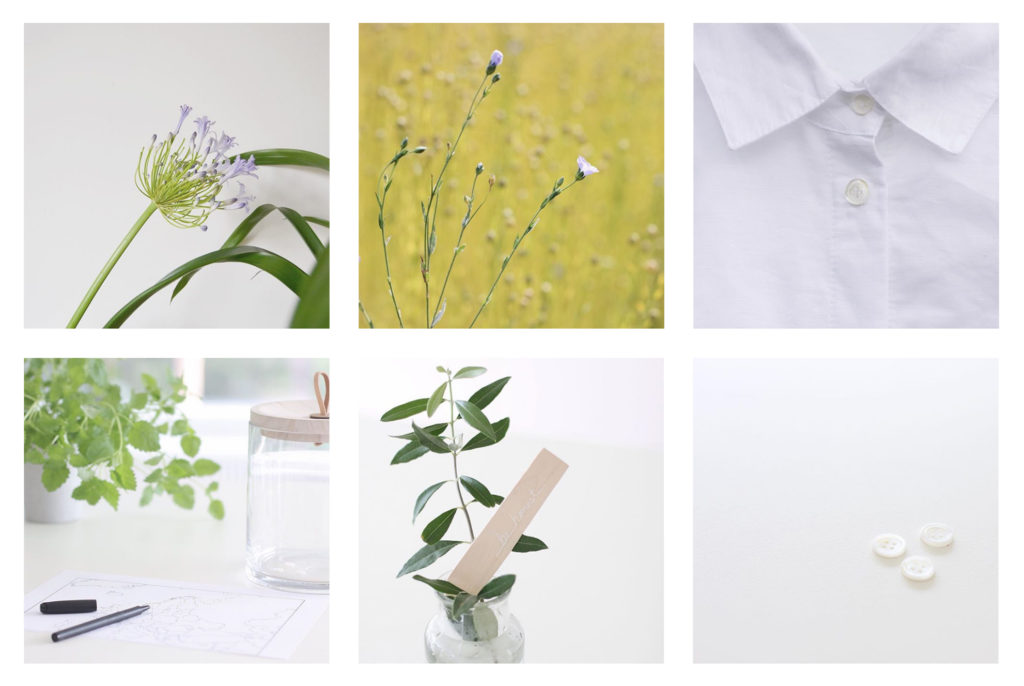
-Quanto è difficoltoso trovare fornitori davvero etici? Spesso sul web si trovano materiali sostenibili ma spesso sono talmente innovativi da non essere ancora disponibili per le piccole quantità necessarie ad un piccolo brand oppure non c’è un’offerta di colori. Inoltre trovato il materiale è difficile trovare un laboratorio che produca piccole quantità. E’ stato difficile per voi?
E: Devo ammettere che all’inizio mi ha sorpreso quanto fosse difficile trovare tessuti sostenibili di alta qualità e prodotti in Europa. Volevamo utilizzare tessuti che avessero un ciclo produttivo completamente tracciabile. Teniamo enormemente alla trasparenza in questo senso per evitare grandi problemi etici ed ambientali come il lavoro minorile, le condizioni lavorative insicure, l’uso di sostanze chimiche pericolose e l’inquinamento industriale. Vogliamo che ogni step del processo abbia un volto di riferimento. Durante l’estate del 2016 abbiamo fatto un viaggio in Europa e fatto visita ad un’ azienda italiana a conduzione familiare, Albini. Non hanno avuto problemi ad essere trasparenti, inoltre investono nei loro dipendenti. Ecco perchè siamo stati felici di lavorare con i loro tessuti di alta qualità. Quindi non è stato semplice ma se si lavora duro è fattibile.
S: come ha detto Elina, trovare i fornitori giusti è stata la parte più complicata: abbiamo dedicato
un anno e mezzo solo a ricerche, fibre e potenziali partner.
Eravamo convinte che ormai fossero in tanti ad aver abbracciato la sostenibilità; purtroppo ci
siamo ritrovate a constatare il contrario, in molti hanno ancora paura ad investire in questa
direzione pensando – a nostro avviso erroneamente – che non ci sarebbero abbastanza
consumatori finali interessati. Per altri, invece, la sostenibilità è solo una questione di marketing:
sostengono di produrre in maniera sostenibile perché sanno che per una certa fascia del loro
target questo li mette sotto una luce migliore; ma, nella pratica, di sostenibile non hanno proprio
niente.
Quello su cui non transigevamo era il trovare collaboratori che, come noi, non avessero paura di
mostrare il loro processo di produzione nella sua interezza. La trasparenza è per noi
fondamentale, e vogliamo poter mostrare con orgoglio alle nostre future acquirenti chi e come ha
fatto i loro capi.
-Fortunatamente la responsabilizzazione etica in fatto di abbigliamento sta crescendo. In questo senso molti piccoli marchi che conosco sarebbero felici di trovare fornitori giusti. Esistono fiere di settore o piattaforme web dedicate al processo produttivo etico e non solo al prodotto finito?
E: Bella domanda! Ci sono piattaforme online come GOTS database o Sewwand dove si possono trovare fornitori di materiali, principalmente tessuti, stampatori e trattamenti su tessuto, ma si trovano opportunità sostenibili anche a fiere come il Premier Vision di Parigi. Purroppo, nella nostra personale esperenza, è difficile trovare laboratori ed aziende con un ciclo produttivo sostenibile. Sarebbe fantastico se qualcuno creasse una piattaforma che comprendesse tutti i passaggi di questo ciclo, dai materiali alla produzione e distribuzione, etc. Un tipo di piattaforma di questo tipo favorirebbe la nascita di molti più marchi sostenibili o il cambiamento di quelli già esistenti.
S: Elina ha ragione, trovando difficile reperire un’unica piattaforma che raggruppasse tutte le figure
coinvolte nel processo siamo state costrette a muoverci su più fronti, entrando in contatto con più
entità possibili e cercando di visitare personalmente quelli che ci sembravano i fornitori migliori per
fare una scelta pienamente consapevole.
-Credo che il percorso di crowdfunding o su kickstarter sia davvero utile per un brand che si affaccia nel mercato, non solo dal punto di vista del finanziamento: ti permette infatti di conoscere davvero il tuo target, da dove viene, qual’è la sua età. Inoltre tu andrai a produrre delle quantità già pagate, che è un aspetto che aiuta moltissimo un marchio agli inizi, inoltre non ci sono rimanenze quindi limitate spese di magazzino. Credo che sia un modo efficace di raggiungere, se affrontato nella maniera giusta, un pubblico internazionale senza mediatori e ricarichi. Qual’è stata la vostra esperienza in merito? Vi sentite di poterla suggerire?
E: Il crowdfunding è davvero un’ottima maniera di cominciare un’ impresa. Con un rischio minimo puoi capire se esiste un pubblico per il tuo prodotto o servizio. In più, le persone che partecipano alla campagna, diventano futuri clienti fedeli e followers attivi. Se qualcuno sta pensando ad una campagna crowdfunding suggerisco di pianificare tutto molto bene ed in anticipo e di riservare tempo e risorse durante la campagna altrimenti non funzionerà bene. Siamo state molto soddisfatte del risultato del nostro crowdfunding. Tutti i pre ordini sono stati consegnati lo scorso novembre/dicembre e siamo davvero grate per il feedback positivo ricevuto. E’ bellissimo vedere quante persone hanno amato i nostri prodotti. In questo momento abbiamo appena aperto il nostro negozio online e non vediamo l’ora di far crescere ancora la nostra impresa!
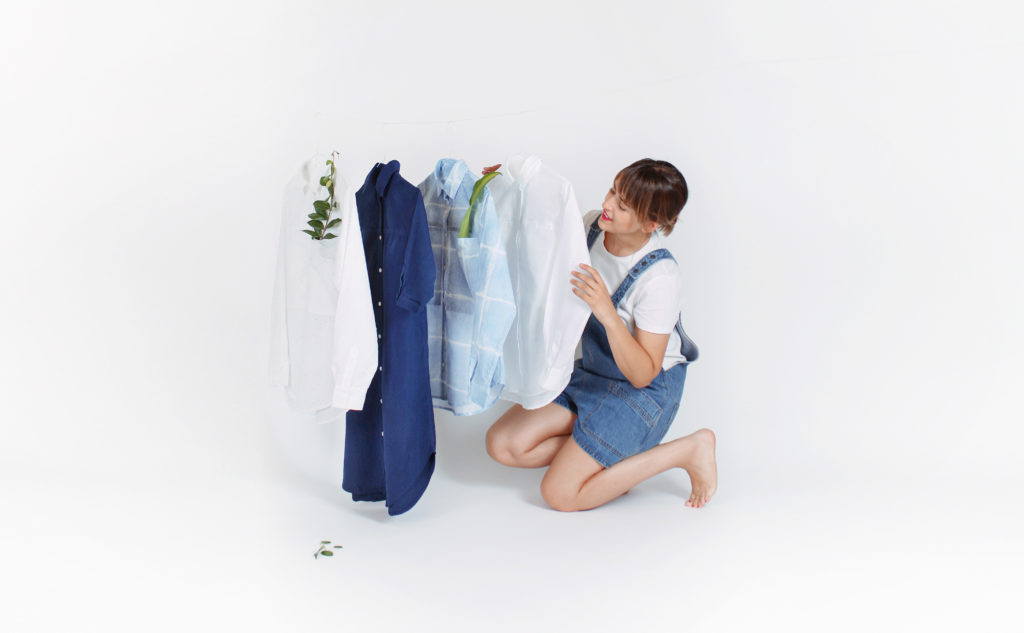
-E’ tempo di produzione, giusto? Quali saranno i vostri prossimi step?
S: Abbiamo al momento concluso la prima produzione, e stiamo pianificando i capi che verranno
presentati in primavera. Ci piace pensare che possa diventare una collezione partecipata, con il
contributo di chi ci segue sui canali Instagram e Facebook! Abbiamo anche appena aperto il fondo
per costruire una scuola in Paesi in via di sviluppo con l’associazione Pencils of Promise.
Quando abbiamo iniziato a lavorare su Iluut, una delle cose su cui ci siamo immediatamente
trovate d’accordo è stato il fatto di donare una percentuale dei nostri margini a una o più
associazioni che ritenessimo meritevoli e, come noi, trasparenti nel loro operare.
Crediamo che una vita migliore cominci dall’accesso all’educazione da parte di tutti i bambini.
Potete seguire il processo – ed eventualmente contribuire anche voi alla costruzione – a questo
link.
E: In questo momento i nostri followers su Instagram e Facebook hanno la possibilità di aiutarci a disegnare i nuovi vestiti primaverili. Andranno in produzione all’inizio di Marzo e non vediamo l’ora di averli in negozio in primavera!
V: Stiamo lavorando assieme a chi ci segue su FB ed Instagram, vogliamo condividere con loro il nostro design process e che si sentano coinvolti nelle nostre decisioni riguardo i nuovi capi primaverili. E’ una maniera ottima per capire cosa pensano e cosa davvero vorrebbero indossare, specialmente considerando che sono capi progettati per durare anni nei loro armadi.
-Qual’è stato il riscontro più lusinghiero che avete avuto?
E: All’inizio: è stato davvero bello che due persone talentuose come Silvia e Vj abbiano avuto questa visione di Iluut e che abbiano voluto svilupparlo assieme a me. Poi è stato lusinghiero il feedback e l’entusiasmo delle persone che hanno partecipato alla nostra campagna crowdfunding lo scorso autunno! E ora le persone stanno attivamente partecipando a disegnare i nuovi capi su Instagram e Facebook.
S: E’ stato incredibile leggere i messaggi e vedere le foto delle persone che ci hanno sostenuto
durante la campagna e che indossavano i nostri capi! Un sacco di feedback entusiasti in merito al
fitting e alla qualità dei tessuti e della realizzazione, cose per cui abbiamo investito tantissimo
tempo. Ne è valsa davvero la pena!
Mi piace pensare che per tante persone possano riscoprire attraverso i nostri capi quello che il fast
fashion ha purtroppo reso un ricordo lontano: qualità, competenza, ricerca.
Un’altra cosa di cui siamo molto orgogliose sono i commenti super positivi alla linea di
comunicazione e di immagine che abbiamo scelto di portare avanti: facciamo tutto da sole, e
siamo partite con un budget davvero ridicolo! Per questo i feedback positivi ci riempiono di forza ed
entusiasmo.
V: Il fatto che la gente abbia creduto in noi . Hanno creduto nel brand e che sia possibile creare una collezione di abiti belli e senza tempo ed allo stesso tempo fare qualcosa con un impatto significativo per qualcun altro.
▶︎LINKS:
WEBSITE
INSTAGRAM
FACEBOOK
PENCILS OF PROMISE
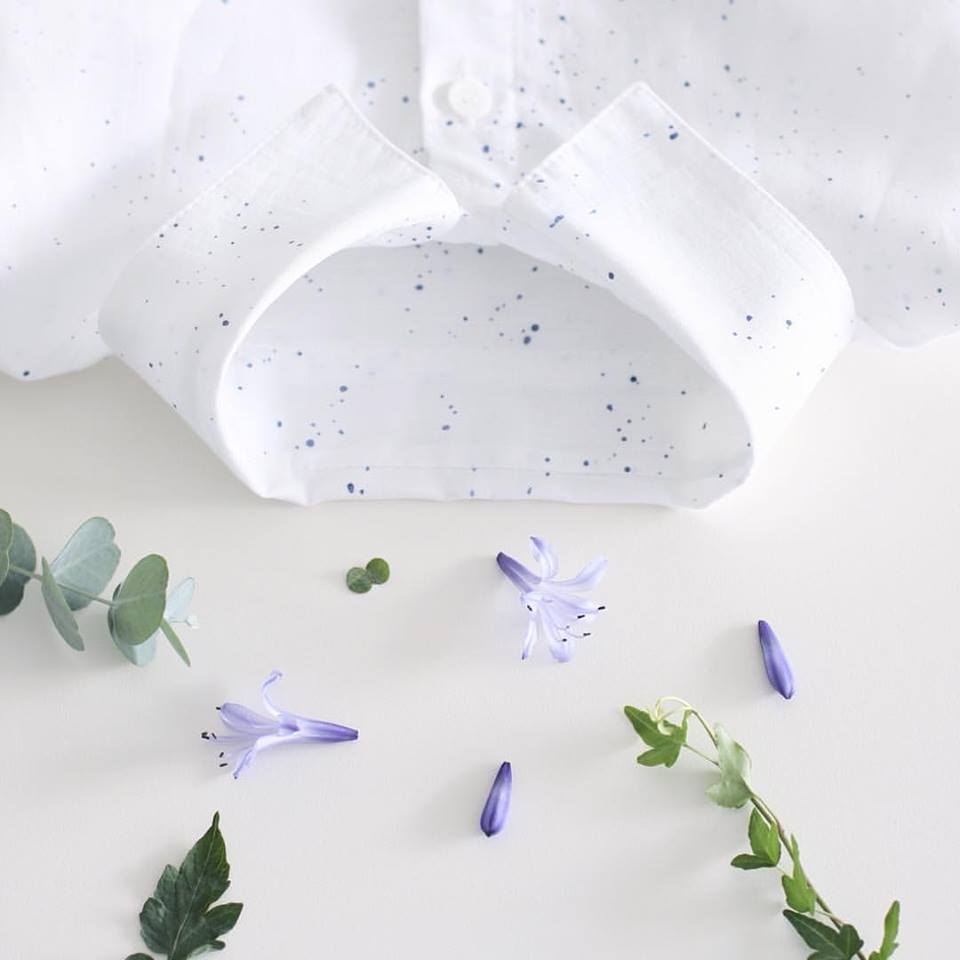
▶︎▶︎▶︎▶︎ENG:◀︎◀︎◀︎◀︎
What I think is great about auto producing or having your own brand is about having control. For years professionals working into the fashion system didn’t know where they were producing or if producing where the design came from. Designers didn’t know the target they were designing for, sometimes the brand itself didn’t really know their public. It was just all about doing your part of the job and feeling so great just because hey, you’re working in fashion.
Control is really a focal point: when you know, at least in theory, you want to improve and solve problems, you can’t refuse it. You really know who you are selling to and this means limiting unnecessary or unsold products. You actually understand your supplier’ s problems and you can turn them into advantages. Basically you try to do your best: limiting pollution, waste and senseless items. If you don’t work anymore in a two-dimensional and abstract way, then the supply chain, quality and also designers and workers satisfaction, can only get better. What has been of crucial importance in recent years was moving from abstract to concrete. From vectorial to, finally, sensorial.
This is my interview with Iuut founders: three girls from very different nations (Italy, Great Britain, Finland) who met through a call on Youtube, created a sustainable brand (of which have full and detailed control), then launched it successfully on Indiegogo, a brand now they are designing together with their followers on Facebook and Instagram. Talking about starting a brand, contemporaneity goes from here.
– Why everyone should act ethical in its own way about clothing?
SILVIA STELLA OSELLA, co-founder & textile designer, Italy
As for every change, I believe it’s important to start locally to act globally: the smallest
choices we do everyday have a much bigger impact than we can imagine; and as we are acting
more consciously for what concerns what we eat, or how we get around, it’s now time to start doing
it for other aspects of our everyday life. Behaving ethically about clothing means helping reducing
the environmental impact of this industry, improve workers’ conditions and reduce the negative
consequences on our health; did you know that our skin absorbs almost as much as our stomach
does? It’s now time to start asking ourselves how is made – and what is made of – what we wear
everyday.
ELINA CERELL, founder & CEO, Finland
It’s sad that fashion industry that creates so much beauty around, is at the same time the second
most polluting industry in the whole world and includes many social problems as well. That to be
said, each of us has a chance to make a difference and make more sustainable buying decisions.
When doing so, we’ll make this planet a better and cleaner place and treat other people better.
VJ TAGANAHAN, co-founder & fashion designer, UK
Simply because our clothes are not merely a statement about us or who we want to be perceived
as, but it is also about the people that made it— the processes it has been through and its
environment impact. We live in a society where we have the information and the knowledge and
that each and one of us has the capacity to be able to help change things.
-Is still – nowadays – clothing the first way to tell who you are?
S: We are nowadays used to a very hectic image consumption: everyday we are overwhelmed with visual contents originally produced for an immediate fruition. In this context, the selfrepresentation value that we associate to clothing has undoubtedly reached very high peaks. In my opinion, though, we are getting back to a “slower” approach to different aspects of our lives; I think that people are starting again to ask questions, to try to understand what’s underneath the surface. It seems to me that the necessity of dressing to appear or to make a statement is slowly leaving space to the will of finding out more, ask questions, get passionate for stories and then “wear” them proudly.
E: Clothes of course play a role in self expression but I feel the most powerful way to express
yourself nowadays – especially among the younger generation – is through social media. It’s more
like what you’ve been doing and where have you been – Instagram and Facebook live are getting
more and more popular and that’s one sign of that. Personally for me it seems that people value
the actions more and more.
-Tell us what was your first thought when decided to join Iluut project. And then the second
thought (that often is wiser than the first one) !
E: I’ve had this dream about a sustainable fashion company already for many years. I had a plan
that at first I would love to be in the business world for a while and learn from different sectors how
great business are operated. In the spring 2014 I strongly felt that it would have been a great time
to see if I could find likeminded people to share the same dream with me. I definitely wanted an
international team and I thought the best way to reach the right people would be making a
YouTube video. I must admit that while planning it I was scared. “Is this fully stupid? What if no-one
will be interested?” I thought. But then I answered myself that I have nothing to lose but everything
to gain, so let’s just do this! And now when looking back, I’m so happy I had the courage to do so! :)
S: When I stumbled across Elina’s video I happened to be in a very peculiar moment of my career; after over 7 years in the textile industry, and immensely loving my job, I was feeling the urge to start a change, to make something happen that was way closer to my values and ethics. Right at that time I was planning the opening of my new textile design studio as a freelance, in a pretty harsh historical and economical moment; so I took Elina’s message as a sign, that was exactly the direction where I wanted to go. The second thought has been: “working from different Countries with three different time zones? That is going to be crazy!”; but in the end it all worked our perfectly, working hard and with a strong common vision!
V: My first thought was that it was an opportunity I wouldn’t want to miss. I understood what Silvia
and Elina were concerned about and we share the same values that we want to bring forward if
given the opportunity to start a brand. The second one is that we are able to design garments that
people would want to wear and at the same time be conscious about it — in our fabrics, the ways
we are working, and even down to interacting with the women we are designing for. That’s
amazing to find people who are in the same page as you.
-What does it feel like to perfectly know the people involved in your work? I mean your
partners but especially your production team. Is it really so different from the other jobs
you have?
E: iluut is so close to my heart and the whole project feels very meaningful. That’s why I’m super
glad of each and everyone doing something on this project. It feels different than working for
someone else because this is a creation of our own team; everything feels somehow more
personal.
S: It’s completely different! First of all, as a team we share the vision of making something that can have a real impact, that tells a story which our future consumers could feel part of, and making the whole process as transparent as possible. That’s why we invest so much time looking for people and suppliers willing to build a trustful relationship, to share our same vision, sometimes even asking them to get involved in our social media to reply directly to the questions of our followers!
V: Totally. The whole process becomes almost like 1-to-1. You understand your team mates, and you understand the people who you are working with to bring the products together. We are not machines, we understand and respect each other as we are.
-How difficult is finding real ethical suppliers? On the web we often find sustainable fabrics,
but sometimes they are too innovative so they’re not already available for small quantities a
little brand needs or you don’t find a wide color choice. But more often once you have the
fabric, it’s hard to find a proper factory that produces small batches. Was it difficult for you?
E: I need to admit that at the very beginning it was very surprising how difficult it was to find high quality, sustainable woven fabrics that have been made in Europe. We wanted to find fabrics that are fully traceable; meaning from the farm to us. The reason why we valuate the full transparency
so much is that we truly believe it decreases fashion’s biggest ethical and environmental problems like child labor, unsecured working conditions, dangerous chemicals and industrial pollution. We want that every step of the process has faces. On summer 2016 we made a European trip and visited a family own, Italian fabric manufacturer, Albini. They’re willing to work with fully open cards and they also invest into their people. That’s why we were happy to work with their high quality fabrics. So it’s not always easy but it’s doable when working hard.
S: As Elina said, finding the right suppliers has been the hardest part: we spent over one and a half year only over researching fibers and potential partners. We were pretty sure that we would have easily found many industries that had chosen to embrace a more sustainable direction for the future, but unfortunately we were wrong: most of them still find it a risky investment, fearing that the final consumers are not yet interested in this kind of products. For others, sustainability is just a matter of marketing: “greenwashing” is in our opinion a very dangerous problem of this industry, and doesn’t help to create a more conscious collective culture. What we couldn’t compromise about was the choice of collaborators that, just like us, valued transparency in the whole process and had nothing to hide. This is essential for us, and we want to be able to show with pride to our future consumers who and how made their clothes.
-The ethical responsibility about clothing is luckily growing lately. Many little brands I know
would love to find suppliers to work with. Are there any trade shows or web platforms
dedicated to the process instead of the finished object?
E: Great question! There are online platforms like the GOTS database or Sewwand, where you can find sustainable suppliers, mainly what comes into fabrics, fabric finishing and printing. Also, in
fairs like Premier Vision in Paris you can find sustainable options. But within the experience we
have until now, it’s hard to find sewing companies who are dedicated in sustainable production, or other companies dedicated to these values. It would be amazing if someone would create a
platform where you could find sustainable companies for every aspects of the business; starting from the book keeping. That kind of platform would make it easier starting a sustainable business or changing an existing one more into that direction.
S: Elina is right, since it was very difficult to find just one platform that could put together different aspects involved in the process we had to explore different directions, especially getting in touch with as many entities as possible and trying to visit personally the ones that seemed more reliable and closer to our values, to make fully conscious choices.
-I think all the crowdfunding/kickstarter thing is very hepful for little brands, and not just on
the economical funding side: it also allows to really know your target, where they are from,
how old they are. You are producing for an already paid (and appreciated) production, that
means a lot talking about running a starting business. Moreover, you don’t have leftovers –
that means no warehouse rent expenses. I think it’s a way to reach, if done in the right way,
an international public but one by one, without other mediators mark ups. What was your
experience about it? Would you suggest it?
E: Crowdfunding is a great way to start a business. There you can test with a low risk if there is
audience for your product or service. Also, people who join the campaign, can become very loyal
future customers and active followers which is awesome. If someone plans to start a crowdfunding
campaign, I warmly suggest to plan it very well beforehand. Also, it’s crucial to book resources to
be active during the campaign, otherwise it won’t work well.
We’re very happy about the successful crowdfunding campaign. All the pre-orders were delivered
on last November/December and we’re so thankful for all the positive feedback we have received.
It’s amazing to hear how much people have loved our products. Now we’re at the stage where we
just opened our webshop and have a small inventory. We can’t wait for starting to grow
this business!
-It’s production time, right? What will be Iluut next steps?
S: We have also just opened the fund to build a school in developing Countries with the association Pencils of Promise. When we started working on Iluut, one of the things we all immediately agreed on was the possibility of giving a percentage of our margins to one or more valuable associations that shared our same values and as transparent as our brand in their way of working. We believe that a better life starts from the possibility for all children to access education.You can follow the process – and even contribute to the school building – at this link.
E: Currently our followers on Facebook and Instagram have a chance to join designing new S/S dresses. The clothes will go into production at the beginning of March and we can’t wait to get those to our webshop at the spring time.
V: We are currently working together along side our Instagram and Facebook following. We want to
share our design process with them and that they are involved in our decisions on design styles
that we are thinking of producing for S/S 17. It’s a great way to know what they are thinking and
what they would like to wear. It’s always a great advantage for all of us to know what does she
want for the next season? Always having in mind that it will last her for many years to come.
-What was the most flattering feedback you had?
E: At first: it was amazing that two talented people like Silvia and Vj trusted the vision at the very
beginning and wanted to start developing iluut together with me.
Second: it was a flattering feedback that people wanted to join with this enthusiasm our
crowdfunding campaign last autumn! And now people are actively participating in designing the
next dresses together with us on Facebook and Instagram.
S: It was incredible to read all the happy messages and see the pictures of the people that supported our campaign wearing our clothes! So many enthusiastic feedback regarding fitting and the actual quality of both materials and production, all things in which we have invested a lot of effort and time. It was really worth it! I like to think that many people could re-discover through our garments things that fast fashion has unfortunately made them forget: quality, competence and research. Another thing we are really proud of are the super positive comments to our approach to communication and our brand image: we do all this by ourselves, and we started with a very tiny budget! That’s why positive feedback give us strength and enthusiasm.
V: That people believed in us. They believed in the brand and that can be successful in creating a
beautiful and timeless collection as well as giving back.
▶︎LINKS:
WEBSITE
INSTAGRAM
FACEBOOK
PENCILS OF PROMISE
